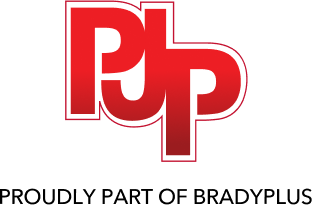
Scotch Whisky (not Whiskey).
Scotch whisky is the world’s most renown and best selling style of whiskey! If you go into a bar anywhere in the world (not in North America) and ask for whiskey, you’ll find the bartender directing you to a shelf of Scotch for you to select your tipple from. Scotch whisky is much more than the, sometimes overbearing, peaty, smokiness which has many of us shaking our heads. But what makes scotch, Scotch? How do you identify bottles which you like? Here’s the low down on this beautifully crafted spirit!
History

The history of Scotch is a tumultuous affair and the fact that Scotch whisky has survived until this day is due to the dedication to producing the stuff. Those who make it take tremendous pride in their work. Here’s the concise history of Scotch whisky.
Although the Scottish claim that is was them whom first distilled spirits in the United Kingdom, it is now agreed that it was the Irish whom first learnt the art of distillation back in the 12th Century. It is thought that Irish monks visited the Iberian Peninsula during this period, learning and returning with the secrets of distillation. Through the clergy this knowledge traveled to Scotland and whisky production began in monasteries. Here we have our first evidence of whisky production, from a tax record, where a friar was ordered to make “VIII bolls” of “aqua vitae” which is equivalent to around 1500 bottles. This was no small production!
Whisky production, until recent times in Ireland and Scotland, was a cottage industry who’s commercial production was originally suppressed by English rulers and occupiers because of its popularity. Originally they tried to suppress and stop its production in full, but once they realized the lucrative returns to be gained by taxing this product they began trying to do so. Thus driving whisky production into secrecy and further out of their grasp. It’s no secret that occupied people don’t like paying taxes to their ruling occupiers.
Scotch whisky had been popular across the continent of Europe for centuries. Due to legislation intended to ensure that Englishmen kept most of the profits and that the product didn’t offer competition to the products of England, Scotch underwent a lot of smuggling and illegal production. Although it was popular, Scotch itself was always produced in small quantities in pot stills and didn’t rise to prominence until the creation of the continuous still. From here blended (and more approachable) Scotch whiskies were created and produced en mass. This was done by enterprising individuals whom, instead of producing their own product, bought barrels from other distilleries and blended them together; producing blended Scotch. Sales of these blended Scotches now far outstrip those of their grandfathers; the single malts.
Defining Scotch Whisky

There are two distinct types of Scotch whisky that are used to make all Scotch whiskies out there:
- Single Malt Scotch Whisky – A whisky produced only from malted barley and water, made it a pot still at a single distillery.
- Single Grain Scotch Whisky – A whisky produced at a single distillery made using malted barley, water and other malted or un-malted grains.
The world “single” here does not refer to the use of a single grain, rather, it means that the whisky was produced at a single distillery. From here one can make one of the five allowed types of Scotch whisky, two of those types are mentioned above, with Single Malt Scotches being the flagship Scotch. Single Grain Scotch Whiskies are not often bottled alone and are usually used to produce blended Scotch whiskies.
The three types of which are described below.
- Blended Malt Scotch Whisky – A blend of two or more single malt whiskies sourced from different distilleries.
- Blended Grain Scotch Whisky – A blend of two or more single grain whiskies sourced from different distilleries.
- Blended Scotch Whisky – The most common of the blended variety, blended Scotch whisky is a blend of two or more whiskies, containing at least one single malt and one single grain whisky.
Technically, all Scotch whiskies are blends (unless a bottle says single cask) it’s how master distilleries of aged spirits around the world keep a continuity of flavor. Single Malt Scotches are blends of whiskies distilled and aged solely at the specific distillery site. The minimum age of any Scotch is three years and the age on the label of a bottle of Single Malt Scotch is that of the youngest whisky used in the bottle. Scotch also has to be aged in oak barrels of a capacity of 700 liters or less, and can only have water or one particular caramel color added to them; or you can’t call it Scotch.
Peat and The Regions of Scotch

Peat is a soil found in marshy areas, made up of compressed vegetation that’s far into the journey of becoming coal. Most of the forests in Scotland were cleared centuries ago for farmland, at the time coal was notoriously expensive. Peat, which sits on the surface of the earth has been burnt for centuries to heat houses, it was only sensible that it would be used to dry the barley used for making whisky. It is this which gives many single malt Scotches their exceptionally distinct, herbal smokiness.
If you look at a bottle of single malt Scotch it’ll have one of six of the whisky regions on the front label; blended Scotches will rarely, if ever, contain this information. Blended Scotch source their whiskies from all over the country. But what do these region mean? To the distilleries themselves regions give them an identity both geographically and historically. Whilst it is said that the different regions give the whisky different characteristics. These ideas are attributed to production techniques and where they’re aged, for instance: it is said that Scotches from Islay contained salty notes because of their proximity to the ocean whilst they were aging. Inversely, Speyside Scotches are said to be sweeter and are hardly ever peated.
It’ll take another article entirely to describe the typicity of Scotches from each of the six regions: Highlands, Lowlands, Campbeltown, Speyside, Islay and the Islands; but just know that they’re all distinctly different and if you or a customer doesn’t like one then you may like another!
Finally: Why Do They Spell Whiskey Wrong?

Scotland is not alone in spelling whisky without the “e.” Japan, Australia, Canada, Wales, and India also opt not to put an “e” in their spelling of whisky. There is no direct difference between whiskey and whisky, it is merely a choice made by the country, and sometimes the distillery, in which that product is made. Whisky was the normal way of spelling it until there was a heated debate between the whisky powers of Ireland and Scotland regarding the inclusion of grain whiskies in the production of blended Scotch.
From this point in history, the mid 1800’s, the Irish began spelling whiskey with an “e” and the Scottish continued spelling it as they always have; without. Because of the overriding popularity of Irish whiskey over Scotch whisky in America at the time American whiskey makers elected to adopt the Irish spelling so as to better compete with the top selling product. So, you could say, the Scottish spell whisky the correct way.






Write a Comment